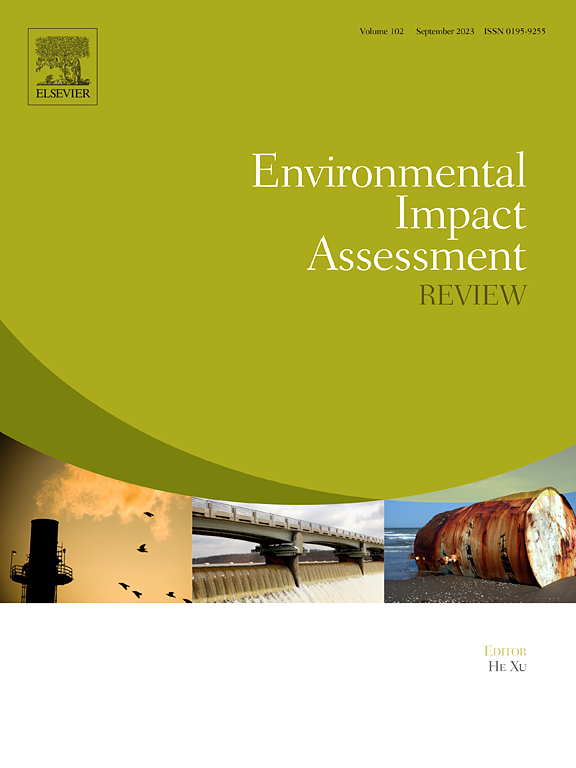“过去-未来”视角下的淡水供给服务流研究——以华南丘陵地区为例
IF 9.8
1区 社会学
Q1 ENVIRONMENTAL STUDIES
引用次数: 0
摘要
在城市化加速的背景下,淡水供应服务已成为可持续发展研究的一个重要领域。本研究开发了一个整合河流路径和流域边界的新框架来模拟和预测淡水供应服务流量。结果表明:2000 - 2020年,钱塘江、瓯江和闽江流域北部地区水资源显著富余,太湖流域淡水严重短缺;富余像元数量呈先增后降的趋势,到2020年达到2000年的1.68倍。基于流域边界及其剩余量,将供给服务流划分为3种类型,确定了34条流动路径。此外,对2025年和2030年的未来预测凸显了持续存在的空间差异。机器学习模型,特别是随机森林,表现出了卓越的预测准确性(R2 >;0.8),优于传统方法。总体而言,该框架为跨流域水资源管理提供了一个强有力的方法,有助于淡水生态系统服务的有效分配和可持续治理。此外,所提出的方法为分析淡水供应服务流量的时空动态提供了一个新的视角。本文章由计算机程序翻译,如有差异,请以英文原文为准。

Exploring the freshwater provision service flows from a “Past-Future” perspective: A case study of the hilly area of South China
Against the backdrop of accelerating urbanization, freshwater provision services have become a critical area of research for sustainable development. This study develops a novel framework integrating river paths and watershed boundaries to simulate and predict freshwater provision service flows. The results revealed that from 2000 to 2020, the areas with a significant surplus water were primarily located in the northern regions of the Qiantang, Oujiang, and Minjiang River Basin, whereas severe freshwater shortages occurred predominantly in the Taihu Lake Basin. Additionally, the number of pixels with a surplus exceeding 1.5 × 105 m3 per square kilometer initially increased and then declined, reaching 1.68 times the 2000 level by 2020. Based on watershed boundaries and their surplus, provision service flows were classified into three types, and a total of 34 flow paths were identified. Moreover, future projections for 2025 and 2030, have highlighted persistent spatial disparities. Machine learning models, particularly Random Forest, demonstrated superior predictive accuracy (R2 > 0.8), outperforming traditional methods. Overall, this framework offers a robust approach for cross-basin water resource management, aiding in efficient allocation and sustainable governance of freshwater ecosystem services. Additionally, the proposed methodology offers a novel perspective for analyzing the spatiotemporal dynamics of freshwater provision service flows.
求助全文
通过发布文献求助,成功后即可免费获取论文全文。
去求助
来源期刊

Environmental Impact Assessment Review
ENVIRONMENTAL STUDIES-
CiteScore
12.60
自引率
10.10%
发文量
200
审稿时长
33 days
期刊介绍:
Environmental Impact Assessment Review is an interdisciplinary journal that serves a global audience of practitioners, policymakers, and academics involved in assessing the environmental impact of policies, projects, processes, and products. The journal focuses on innovative theory and practice in environmental impact assessment (EIA). Papers are expected to present innovative ideas, be topical, and coherent. The journal emphasizes concepts, methods, techniques, approaches, and systems related to EIA theory and practice.
 求助内容:
求助内容: 应助结果提醒方式:
应助结果提醒方式:


